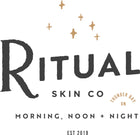An Introduction to Alternative Retinols
Retinol. Tretinoin. Adapalene. If you have acne-prone skin like me, or your goal is to target signs of aging, you're probably familiar with these common forms of vitamin A, otherwise known as retinoic acid. I started my journey with retinoids in the search for a cure to my painful, hormonal acne. Retinoids, with higher concentrations of retinoic acid compared to retinol, aren't available over the counter in Canada. So on a trip to the States I cleared the shelves of Target thinking I had finally found the elixir that would put an end to the cystic pimples that wrecked my skin and self-confidence every month. Unfortunately for me and my skin, my ill-advised prescription dodging landed me with a nasty chemical burn and I learned the lesson that I should have known all along: talk to your doctor before started any topical medications.
After two years and a few rounds of prescribed treatment with tretinoin (a prescription-strength retinoid) my hormonal acne is finally under control. However, it wasn't the miracle that I first assumed and I still find myself breaking out from time to time. If you've used retinoic acid you might have found that, besides the rare chemical burn, your skin became dry, flaky, red, or swollen. Although I still struggle with acne, I'm not keen to expereince the less than pleasant side-effects of retinols. Not only is it uncomfortable, it didn't help me regain confidence in my skin either.
And then I started working at Ritual and was introduced to a class of ingredients that seemed to be the best of both worlds: alternative, or botanical, retinols. Alternative retinols are plant-derived and although they don't share a chemical structure with synthetic retinoic acid, they share the same skin-turnover benefits as retinol - leading to smoother, clearer skin. What's more? Alternative retinols don't cause the same irritation as traditional retinols, so you can generally use them everyday without the harsh impacts on your skin.
While there are some scientific studies that confirm the efficacy of alternative retinols, it is important to remember that Indigenous peoples around the globe have been using the extracts that go into alternative retinols for much of history. There might not be as much scientific backing as there is for synthetic retinols, but knowing that there are hundreds of years of careful usage in traditional medicine is a good place to start.
Since incorporating botanical retinols into my routine my skin has become clearer and the texture on my chin and fine lines around my eyes appear minimized. The best part was that I didn't have to expereince any irritation to see these results. So if you're interested in our collection of botanical retinols and what they do, keep reading!

Graydon's Fullmoon Serum was my first introduction to alternative retinols. This serum is formulated with vinga aconitifolia, or moth bean. Moth bean extract is found in drought-resistant legumes that grow in parts of India. Moth bean's use as an alternative retinol is backed up by this study, which found it outperformed retinyl palmatate (found in many over the counter retinols product). Fullmoon Serum also features blue tansy and peptides to further reduce redness and firm the skin.
2. Lifance's Renew Botanical Retinol Serum

Lifeance's botanical retinol serum is also formulated with moth bean extract. This anti-aging serum is loaded with antioxidants to help protect against the production of free radicals and moisturize fine lines and wrinkles.

Phyto Clear, a lightweight moisturizer, is formulated with two alternative retinols, moth bean and bakuchiol. Bakuchiol is by far the most studied botanical retinols, producing very similar effects on the skin without the irritation. Bakuchiol is found in the seeds of the Babchi and has been used in traditional Chinese and Indian medicine. Phyto Clear combines these botanical retinols with squalane and antioxidants to give it greater moisturizing power.

Three Ships' dreamy night cream uses a "bio-retinol" derived from the Picão Preto plant. Picão Preto is a common flowering plant found in Brazil and other parts of the world, used as a medicine to treat a wide range of maladies, from malaria to wounds. Scientific data on the effects of Picão Preto on the skin is limited, but this study found that it produced effects similar to that of synthetic retinol. Dream Cream also features shorea butter, making it a great choice for anyone looking to reduce signs of aging.
5. Province Apothecary's Vital Nutrient Face + Eye Balm

Everyone at Ritual is excited about our newest addition from Province Apothecary, The Vital Nutrient Face + Eye Balm. Featuring bakuchiol and hyaluronic acid, this balm hydrates and reduces signs of aging and breakouts. I use this as the last step in my nighttime routine, spreading the oil under my eyes and in acne-prone areas.
Have you tried alternative retinols? If not, which alternative retinol product do you want to try first?
